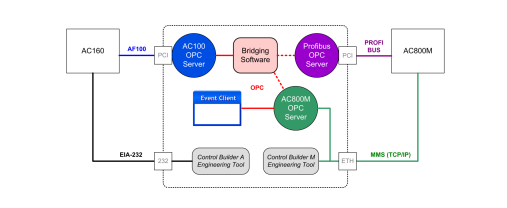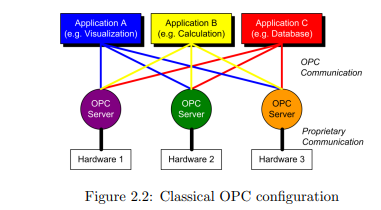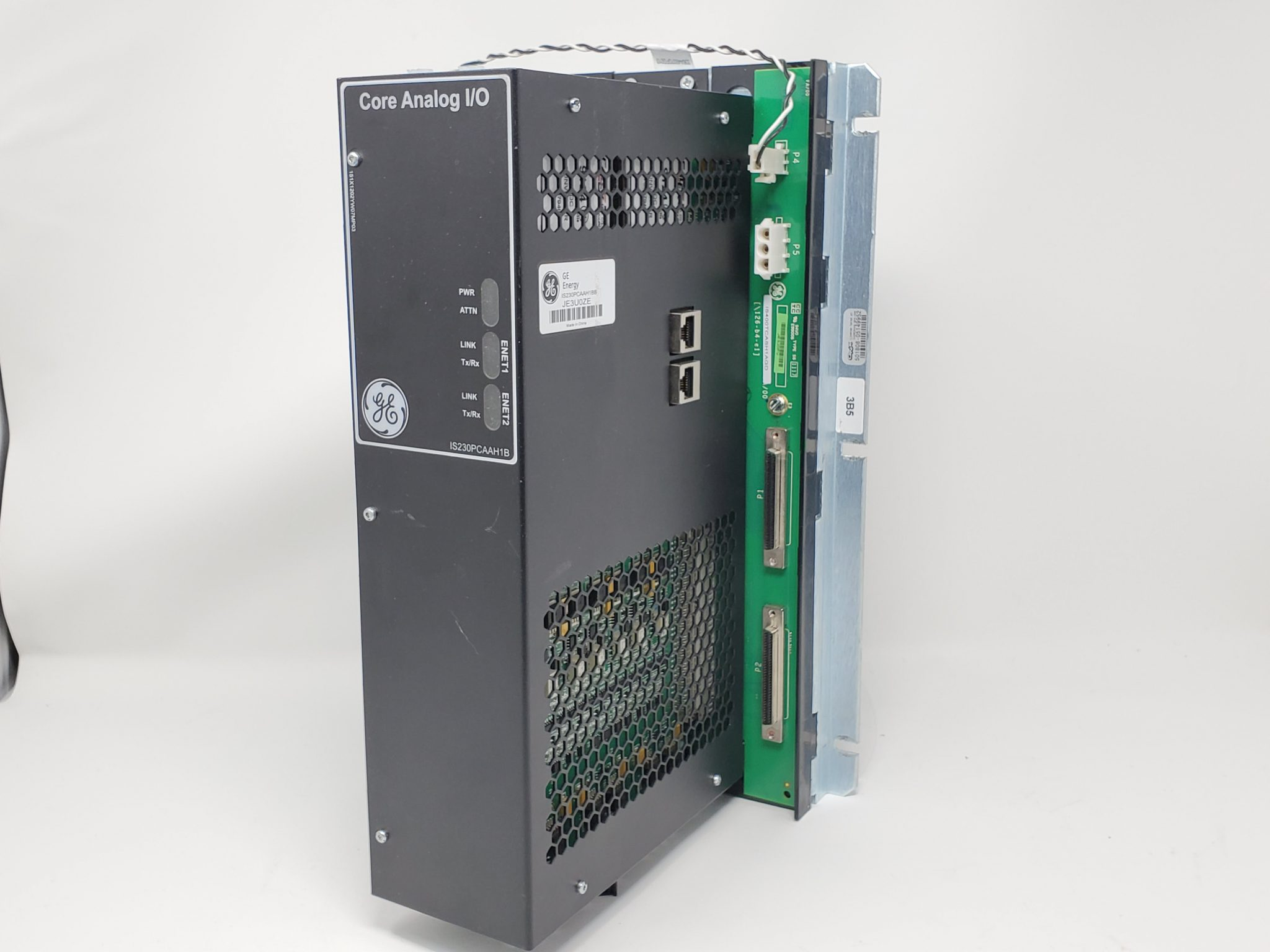
ABB AC160Industrial Networks Connecting Controllers via OPC
1.3 Goals
The goals of this Master’s Thesis are stated as follows:
• Setup and evaluation of a test environment
• Setup of test systems
• Theoretical and practical evaluation of the test systems concerning performance, availability and reliability.
• Identification of improvements and different approaches
• Comparison with alternatives As a starting point for the performance requirements, the current implementation was taken. The corresponding quantity and type of variables are displayed in Table 1.1 with 32-bit floating point values (floats) as analog in- and outputs and 1-bit boolean values as so-called status and command bits. In the current configuration with AC450 and AC160, all variables are written to the AF100 fieldbus with a cycle time of 256 milliseconds. Therefore we determined the minimum requirement for round-trip times from one controller to the other to exactly this time. In agreement with the advisors, instead of elaborating the optional extension stated in the task description (Appendix C), we spent more time on trying out a
1.4 Structure
For the reader’s convenience this Master’s Thesis is structured thematically starting with an overview of components and terms
(2) in the next chapter. The following chapters inform about the test system setup
(3), the evaluations that were made
(4) and finally the results
(5). In a subsequent chapter the subject redundancy is treated
(6) before the thesis comes to an end with the conclusion and outlook
(7). Additional information as well as a CD-ROM containing more detailed data is located in the appendix of this thesis.
Chapter 2 Components and Terms
In this chapter, hardware and software parts as well as terms used for our test system and evaluations will be described. Some additional devices and programs concerning redundancy are introduced not until the chapter according. Information on the version numbers can be found in Appendix B.

2.1 Basic Terms
• Performance, in this thesis, refers to the capability of a communication component in means of speed and throughput.
• Availability is the term for the probability that a system will perform its specified functions when used under stated conditions. A common mathematical definition of operational availability is Ao = MT BF/(MT BF + MDT), whereas MTBF is the “mean time between failure” and MDT the “mean down time” [2]. However, in this thesis, availability is used in a more general manner, since the basis for mathematical operations is not available
• Reliability means the probability of a device remaining failure free during a specified time interval, e.g. the maintenance interval: R = e λt
• Redundancy is the implementation of extra components in addition to the ones needed for normal operation. Thus, redundancy normally increases reliability and availability
2.2 OPC
OPC, originally short for “OLE for Process Control”, is an open, standardized software communication interface specification launched in 1996 by a task force of different automation companies, later forming the OPC Foundation. As the former name indicates, OPC is an adaption of Microsoft’s Object Linking and Embedding OLE1 to the process control business, which used to be highly proprietary at that point of time. Thus it was almost impossible to efficiently combine products of different vendors. By providing so-called OPC servers with their devices, buses and software, vendors open their products to any OPC compliant client able to connect to the server for data exchange. Usually, an OPC server can handle several clients at once, while these clients—e.g. visualization or calculation applications—can connect to different servers in order to obtain their needed information.

Over the years, the OPC Foundation has been adding eight additional specifications to the original one, therefore the name OPC was freed from its original meaning and is now used as an umbrella term [3]. Some important specifications are quickly explained in the following:
•DA (Data Access) is the original and most widely used standard of OPC. Its purpose is the cyclic polling of real time data, for example for visualization purposes.
• HDA (Historical Data Access), in contrary, specifies the access to already stored data.
• AE (Alarms and Events) describes the non-cyclic, event-based exchange of alarms and events.
• Data eXchange is a specification from 2002 which regulates the direct communication between two OPC servers
For this Master’s Thesis it was made use both of the DA specification for the main purpose of communication as well as the AE specification in order to display and log round-trip times. Unfortunately, the promising Data eXchange specification is almost inexistent in practice and could therefore not be used in our thesis. The underlying technique to exchange data is the component object model COM of Microsoft Windows, therefore OPC can only run on Windows operating systems
[4]. A new generation of OPC specifications recently published is called OPC Unified Architecture (OPC UA) and is independent of COM, thus being able to run on more operating systems as well as embedded devices























.jpg)












































.jpg)
.jpg)





.jpg)



.png)
.jpg)

.jpg)
_lVjBYb.jpg)

.jpg)
.jpg)



.jpg)
.jpg)







.jpg)

.jpg)
.jpg)











.jpg)





